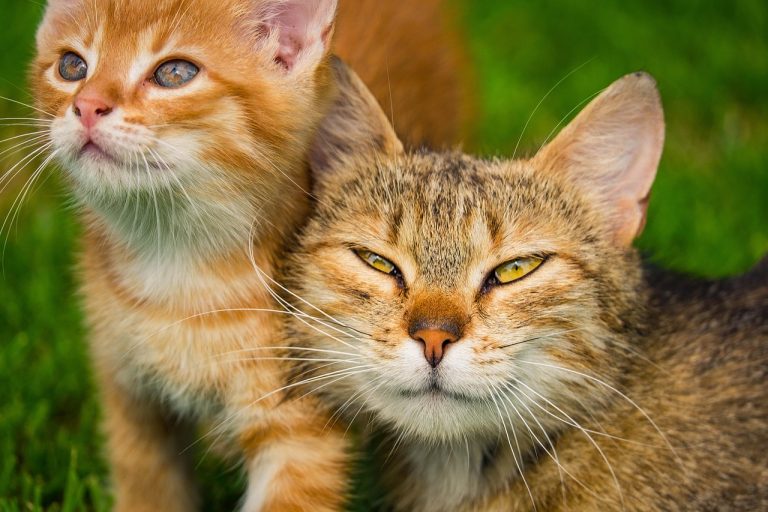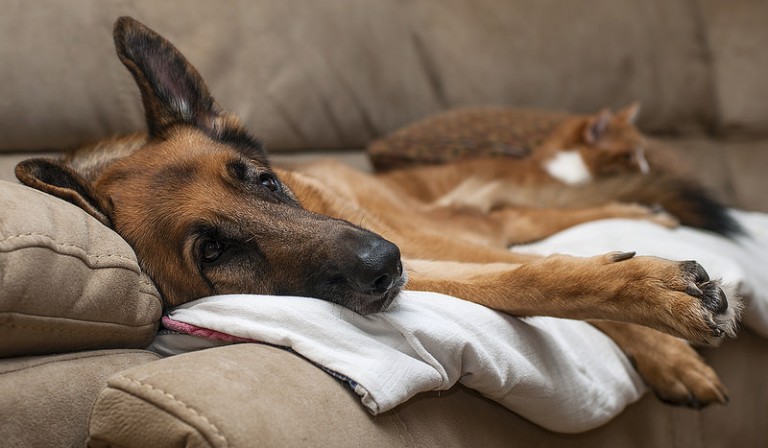Are Indoor Cats Happy? 7 Tips to Keep Your Feline Content
Wondering are indoor cats happy? Discover 7 essential tips to ensure your indoor cat stays happy and healthy.


Don’t leave your pet’s safety to chance
Sign up for Petful recall alerts today.

Are Indoor Cats Happy? Understanding Their Needs
Indoor cats often face restrictions in expressing natural behaviors such as climbing, exploring, stalking, exchanging scents, scratching, hunting, and communicating with other cats. This can lead to:
- Behavioral problems like scratching furniture or inappropriate urination.
- Weight gain, which can cause health issues such as diabetes.
If you have indoor cats, here are some ways to help them express their natural behaviors:
- Provide opportunities for climbing and exploring with cat towers and interactive toys.
- Encourage hunting and stalking behavior with puzzle feeders or hidden treats.
- Offer scratching posts to prevent damage to furniture.
- Create spaces for hiding and safe spots for retreat.
By addressing these needs, you can help ensure your indoor cats are happy and healthy.
Encouraging Hunting Behavior in Indoor Cats
Cats are hunters. Stalking prey provides vital mental stimulation (and no, I’m not advocating hunting live animals. I hate that cats hunt mice and birds). But you can help cats mimic hunting behavior with sneaky feeding tricks.
Cats are designed to eat several small meals a day, so instead of putting all their food in 1 bowl, make them work to find their food: Create a puzzle feeder out of cardboard toilet paper tubes.
- Collect 30 tubes, and glue them horizontally in a 6-by-5 arrangement.
- Put a few kibbles in the center of each tube, so your cat uses a paw to hook the kibble out.
- Alternatively, put small portions of food in the bottom of individual pots of a seedling tray.
Also, consider buying feeder balls, where the cat bats the ball around to get food to fall out. Or make your own by drilling good-sized holes in a plastic container.
Another great idea, especially for overweight cats, is to conceal small portions of food around the house. This way, the cat has to “hunt” out his food, giving him both mental and physical exercise.
The Importance of Play for Indoor Cats
Play is essential for strengthening muscles and improving eye-to-paw coordination. Interactive play sessions are crucial for keeping your cat engaged and happy. Here’s how to make playtime effective:
- Interactive Play: Schedule at least two separate 10-minute play sessions a day.
- Use toys like a wing-on-a-string or a ball for your cat to chase and bat around.
- Encourage your cat to be a predator, even if it’s just chasing a ball of tin foil, to satisfy their instinctual needs.
- Clicker Training: Consider clicker training your cat.
- Find a highly desirable treat your cat loves.
- Use a clicker to signal when a reward is due.
- Cats are highly trainable with the right motivation and enjoy the individualized attention provided by training.

Providing Proper Scratching Surfaces for Indoor Cats
Scratching is a natural behavior for cats to mark objects and condition their claws. To prevent damage to your furniture, offer your cat appropriate scratching surfaces:
- Horizontal Scratchers: If your cat scratches the carpet, provide anchored horizontal scratchers.
- Vertical Scratching Posts: For cats that go for furniture, use solid vertical scratching posts.
- Placement: Position scratching posts near doors (strong markers of territory) and near your cat’s bed, as cats like to scratch when they wake up.
- Material: Cover the posts with materials similar to your cat’s preferred scratching surfaces, such as carpet, wood, or tightly wound natural sisal.
Encouraging Climbing for Indoor Cats
Cats love to watch the world from above, and providing them with climbing opportunities can keep them happy and engaged. Here are some tips to create an enriching environment:
- High Cat Towers: Set up multiple high cat towers, preferably near a window, so your cat can watch the street. Check out the best cat towers here.
- Bird-Feeders: Place bird-feeders near the window to create “Cat TV” for your feline friend.
- Shelving: Provide opportunities for your cat to patrol the room from a height by installing shelves or other high perches.
Safe Indoor Plants for Cats
Outdoor cats often chew on grass to cleanse their system. You can mimic this behavior by growing safe-to-eat plants indoors. Some great choices include:
- Catnip: A favorite among cats, providing both entertainment and a safe chewing option.
- Grass: Simple and safe, grass is easy to grow indoors.
- Thyme: A safe herb that cats can enjoy nibbling on.
- Parsley: Another safe herb that’s beneficial for your cat’s health.
- Wheat or Oats: These grains can be grown indoors and offer a safe, chewable plant option for your cat.
These cats clearly enjoy their multi-level shelf wonderland:
Creating Hiding Places for Indoor Cats
Cats enjoy privacy and having their own spaces to retreat to. Ensure your cat has adequate hiding places in each room by:
- Cat Beds: Place a cat bed behind the sofa to offer a cozy and private spot.
- Cardboard Boxes: Provide simple cardboard boxes beneath the bed or in other quiet areas as easy hiding spots.
Litter Box Setup for Indoor Cats
Indoor cats need appropriate litter box arrangements to feel comfortable and maintain good habits. Here are some tips for setting up litter boxes:
- Number of Trays: Ensure your indoor cat has at least two litter trays. In a multi-cat household, provide one tray per cat plus one extra. Learn more about multi-cat household tips.
- Location: Place the trays in quiet, safe places where your cat feels secure.
- Cleanliness: Keep the litter trays clean to encourage regular use.
Frequently Asked Questions (FAQ)
Can cats have a happy life indoors?
Yes, cats can have a happy life indoors if their natural behaviors are stimulated and their environment is enriching.
How can you tell if an indoor cat is happy?
You can tell if an indoor cat is happy by observing their playfulness, appetite, grooming habits, and social interactions.
Is it cruel to not let a cat outside?
It is not cruel to keep a cat indoors as long as their physical and mental needs are met through enrichment and stimulation.
Are indoor or outdoor cats happier?
Both indoor and outdoor cats can be happy, but indoor cats require more environmental enrichment to ensure their happiness.








